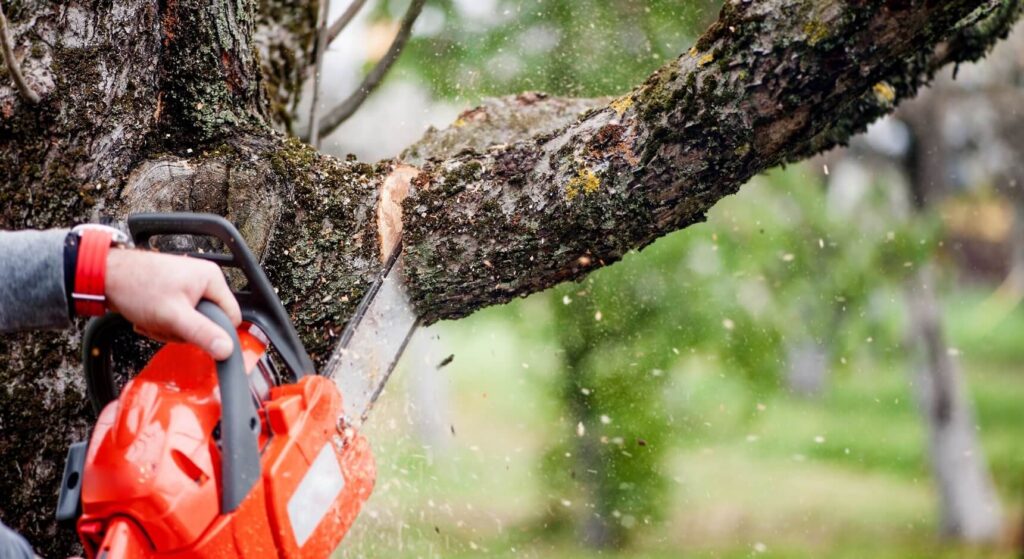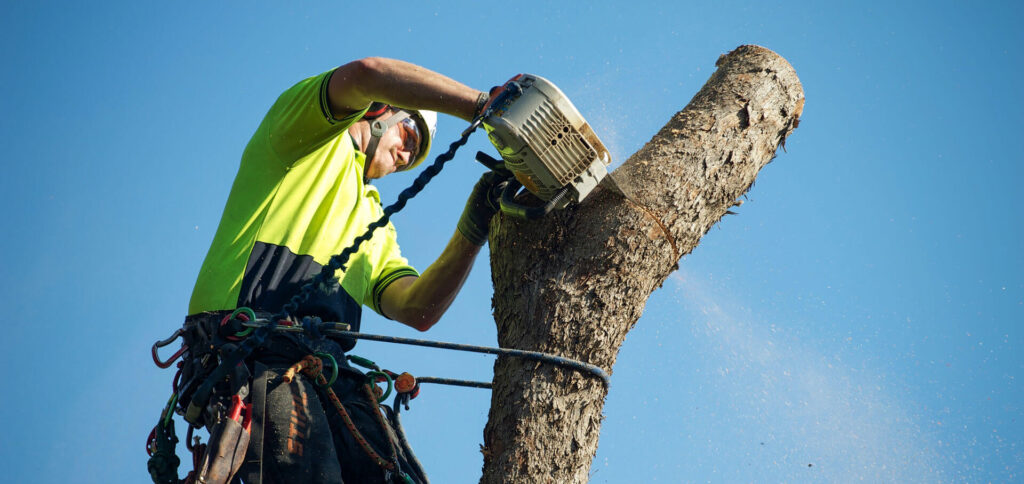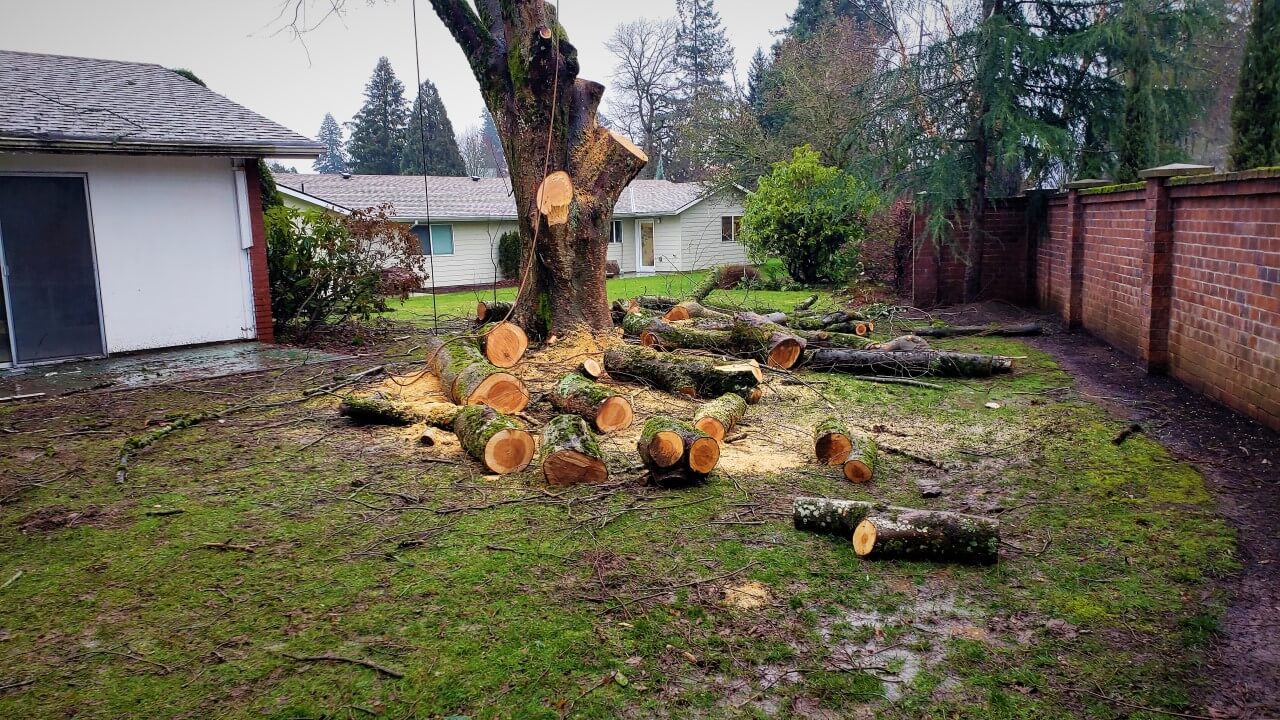Tree removal is an essential aspect of maintaining safety in the Inner West. The presence of trees adds to the beauty and charm of urban landscapes, but if not properly maintained, they can become potential hazards. Understanding the importance of tree removal and its connection to safety is crucial in ensuring the well-being of both residents and the environment.
The Process of Tree Removal Inner West
The process of tree removal Inner West goes beyond just cutting down trees. It is a meticulous procedure that involves a series of steps to ensure the safety of both the workers and the surrounding environment.
Before any tree removal takes place, a thorough assessment is conducted by certified arborists. These experts inspect the trees to evaluate their overall health, structural stability, and potential risks they may pose. Factors such as disease infestation, root system health, and the proximity of the tree to power lines or buildings are carefully considered in the decision-making process.
Identifying Trees for Removal
Qualified arborists assess trees to determine their health, stability, and potential risks. They consider factors such as disease, structural integrity, proximity to power lines, and potential impact on neighboring properties. Based on these evaluations, decisions are made on which trees should be removed.
Furthermore, arborists take into account the environmental impact of tree removal and may recommend alternative solutions such as tree pruning or cabling to mitigate risks while preserving the tree’s presence in the landscape.
The Steps Involved in Safe Tree Removal
Tree removal is a complex process that requires expertise and specialized equipment. Professionals employ techniques such as tree climbing, rigging, and the use of cranes to safely remove trees. The process involves cutting the tree in sections from top to bottom and carefully lowering them to the ground to prevent any damage to surrounding structures.
In addition to the physical removal of the tree, arborists also focus on post-removal tasks such as stump grinding and site cleanup. Stump grinding is essential to prevent regrowth and create a level surface for future landscaping or construction projects. Thorough site cleanup ensures that all debris and wood chips are removed, leaving the area clean and safe for further use.
Related: Top Tree Pruning Sydney Experts for Your Trees
Understanding the Importance of Tree Removal
Trees play a significant role in urban landscapes, providing shade, improving air quality, and reducing noise pollution. They serve as habitats for various species of birds and animals, contributing to biodiversity. However, when trees are not regularly maintained, they can pose risks to human life and property.
The Role of Trees in Urban Landscapes
Trees in urban areas contribute to the overall aesthetics of the surroundings. They create a sense of tranquility and provide a refreshing environment. The shade they provide makes urban spaces more comfortable, reducing the heat island effect and energy consumption. Additionally, trees help mitigate air pollution by absorbing harmful pollutants and releasing oxygen.
Furthermore, trees act as natural carbon sinks, absorbing carbon dioxide during photosynthesis and helping to combat climate change. They also play a crucial role in water management, reducing runoff and erosion by absorbing rainwater and preventing soil erosion.

The Risks Associated with Unmaintained Trees
Despite their benefits, trees can become hazardous if left uncared for. Overgrown branches can interfere with power lines, posing electrocution risks. Weak or diseased trees are prone to falling during storms or high winds, causing damage to homes, vehicles, and even endangering lives. Moreover, tree roots can grow into sewers and foundations, leading to costly repairs and potential structural instability.
Regular tree maintenance, including pruning and removal when necessary, is essential to ensure the safety of individuals and property. By addressing potential risks proactively, property owners can prevent accidents and avoid costly damages. Consulting with certified arborists and tree care professionals can help identify trees that require attention and determine the best course of action to maintain a healthy urban forest.
The Connection Between Tree Removal and Safety
Tree removal is an essential step in ensuring public safety. By addressing potential hazards and removing overgrown trees, the risk of accidents and injuries can be significantly reduced.
Aside from the immediate safety concerns, tree removal also plays a crucial role in environmental conservation. Overgrown trees can compete with native species for resources such as sunlight, water, and nutrients. By removing these trees, the ecosystem’s balance is restored, allowing other plants and wildlife to thrive.
Potential Hazards of Overgrown Trees
Overgrown trees can pose several risks. Branches that extend into roadways or sidewalks obstruct visibility, creating hazards for motorists and pedestrians. Large branches or entire trees can break and fall, causing severe injuries or blocking roads. Removing such trees proactively eliminates these dangers.
In addition to the physical risks, overgrown trees can also harbor pests and diseases that can spread to other vegetation. By removing these trees, the spread of pests and diseases is contained, protecting the overall health of the ecosystem.
How Tree Removal Enhances Public Safety
Tree removal enhances public safety by eliminating risks associated with unstable trees. Trained professionals identify trees that are at risk of falling or causing damage and carefully remove them. This ensures that the community can enjoy public areas without fear of accidents or property damage.
Furthermore, tree removal can also improve the aesthetics of public spaces, making them more inviting and enjoyable for residents and visitors alike. By removing overgrown or damaged trees, the landscape can be revitalized, creating a more visually appealing environment for everyone to appreciate.

The Environmental Impact of Tree Removal
While tree removal is essential for safety, it is vital to balance it with environmental considerations.
Understanding the intricate relationship between trees and the environment is crucial when considering tree removal. Trees play a significant role in carbon sequestration, air purification, and providing habitat for various wildlife species. Therefore, every effort must be made to minimize the environmental impact associated with tree removal.
Balancing Safety and Sustainability
Efforts are made to preserve trees wherever possible, especially those that are healthy and structurally stable. Tree preservation programs focus on pruning, trimming, and preventive measures to maintain tree health and reduce risks. Additionally, for each tree removed, new tree planting initiatives ensure the replenishment of green spaces and the restoration of the urban canopy.
Furthermore, arborists and tree care professionals often conduct thorough assessments before recommending tree removal. Factors such as the tree’s health, its contribution to the ecosystem, and the potential risks it poses are carefully evaluated to make informed decisions that prioritize both safety and sustainability.
Mitigating Environmental Impact After Tree Removal
After tree removal, steps are taken to mitigate the environmental impact. This includes proper disposal and recycling of tree debris, replanting efforts, and the implementation of sustainable practices. By incorporating eco-friendly alternatives such as composting or utilizing woodchips as mulch, the negative impact on the environment is minimized.
In addition to these measures, community engagement and education play a crucial role in raising awareness about the importance of trees and the need for responsible tree management practices. By fostering a sense of environmental stewardship, individuals and organizations can work together to protect and preserve our natural resources for future generations.
The Future of Tree Management in Inner West
The future of tree management lies in preventive measures, community involvement, and technological advancements.
Preventive Measures for Tree-Related Risks
Regular tree inspections, pruning, and maintenance are essential in preventing tree-related risks. By identifying and addressing potential hazards early on, the need for removal can be minimized, ensuring the safety and longevity of urban trees. In addition to these traditional methods, the use of advanced technologies such as drones and tree risk assessment software is becoming increasingly popular. These tools provide a more comprehensive view of tree health and structural integrity, aiding arborists in making informed decisions about tree management.
The Role of Community in Tree Management
Engaging the community through education and awareness programs encourages responsible tree management. By promoting tree care practices, such as proper pruning techniques and reporting of potential hazards, residents play a vital role in maintaining a safe and sustainable urban environment. Furthermore, community-led tree planting initiatives not only enhance the urban greenery but also foster a sense of ownership and pride among residents, leading to better overall tree care and management.
As urban areas face increasing challenges from climate change and urbanization, the future of tree management in the Inner West will rely heavily on a collaborative approach. By combining the expertise of arborists, the active participation of residents, and the integration of innovative technologies, we can ensure that our urban tree canopy thrives for generations to come.
Other resources: Unleashing the Power of Modular Sofas from Your Go-To Furniture Outlet
Tags: arborist sydney, tree cutting, tree lopping near me, tree removal blue mountains, tree removal central coast, tree removal hills district, tree removal inner west, tree removal north shore, tree removal sydney, tree service near me, tree services sydney, tree trimming services
